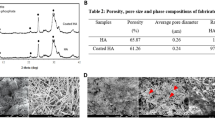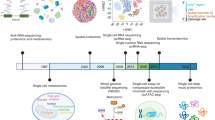Abstract
Adams–Oliver syndrome (AOS) is defined by the combination of limb abnormalities and scalp defects, often accompanied by skull ossification defects. We studied nine families affected with AOS, eight of which have not been clinically described before. In our patients, scalp abnormalities were most often found, followed by limb and skull defects. The most common limb abnormalities appeared to be brachydactyly, syndactyly of toes 2 and 3 and hypoplastic toenails. Additional features observed were cutis marmorata telangiectatica congenita, cryptorchidism and cardiac abnormalities. In an attempt to identify the disease-causing mutations in our families, we selected two genes, ALX4 and MSX2, which were considered serious candidates based on their known function in skull and limb development. Mutation analysis of both genes, performed by direct sequencing, identified several polymorphisms, but no disease-causing mutations. Therefore, we can conclude that the AOS in our set of patients is not caused by mutations in ALX4 or MSX2.
Similar content being viewed by others
Log in or create a free account to read this content
Gain free access to this article, as well as selected content from this journal and more on nature.com
or
References
Adams FH, Oliver CP : Hereditary deformities in man due to arrested development. J Hered 1945; 36: 3–7.
Kuster W, Lenz W, Kaariainen H, and Majewski F : Congenital scalp defects with distal limb anomalies (Adams–Oliver syndrome): report of ten cases and review of the literature. Am J Med Genet 1988; 31: 99–115.
Sybert VP : Aplasia cutis congenita: a report of 12 new families and review of the literature. Pediatr Dermatol 1985; 3: 1–14.
Koiffmann CP, Wajntal A, Huyke BJ, Castro RM : Congenital scalp skull defects with distal limb anomalies (Adams–Oliver syndrome–McKusick 10030): further suggestion of autosomal recessive inheritance. Am J Med Genet 1988; 29: 263–268.
Sybert VP : Congenital scalp defects with distal limb anomalies (Adams–Oliver syndrome–McKusick 10030): further suggestion of autosomal recessive inheritance. Am J Med Genet 1989; 32: 266–267.
Tekin M, Bodurtha J, Ciftci E, Arsan S : Further family with possible autosomal recessive inheritance of Adams–Oliver syndrome. Am J Med Genet 1999; 86: 90–91.
Unay B, Sarici SU, Gul D, Akin R, Gokcay E : Adams–Oliver syndrome: further evidence for autosomal recessive inheritance. Clin Dysmorphol 2001; 10: 223–225.
Wilkie AO, Tang Z, Elanko N et al. Functional haploinsufficiency of the human homeobox gene MSX2 causes defects in skull ossification. Nat Genet 2000; 24: 387–390.
Wuyts W, Reardon W, Preis S et al. Identification of mutations in the MSX2 homeobox gene in families affected with foramina parietalia permagna. Hum Mol Genet 2000; 9: 1251–1255.
Wuyts W, Cleiren E, Homfray T, Rasore-Quartino A, Vanhoenacker F, Van HW : The ALX4 homeobox gene is mutated in patients with ossification defects of the skull (foramina parietalia permagna, OMIM 168500). J Med Genet 2000; 37: 916–920.
Mavrogiannis LA, Antonopoulou I, Baxova A et al. Haploinsufficiency of the human homeobox gene ALX4 causes skull ossification defects. Nat Genet 2001; 27: 17–18.
Schmidt-Wittkamp E, Christians H : Lacunar changes in the parietal bones. Observations on 75 members of a family with an increased occurrece of parietal foramia. Fortschr Geb Rontgenstr Nuklearmed 1970; 113: 29–38.
Zabek M : Familial incidence of foramina parietalia permagna. Neurochirurgia (Stuttg) 1987; 30: 25–27.
Little BB, Knoll KA, Klein VR, Heller KB : Hereditary cranium bifidum and symmetric parietal foramina are the same entity. Am J Med Genet 1990; 35: 453–458.
Jabs EW, Muller U, Li X et al. A mutation in the homeodomain of the human MSX2 gene in a family affected with autosomal dominant craniosynostosis. Cell 1993; 75: 443–450.
Qu S, Niswender KD, Ji Q et al. Polydactyly and ectopic ZPA formation in Alx-4 mutant mice. Development 1997; 124: 3999–4008.
Satokata I, Ma L, Ohshima H et al. Msx2 deficiency in mice causes pleiotropic defects in bone growth and ectodermal organ formation. Nat Genet 2000; 24: 391–395.
Lin AE, Westgate MN, van der Velde ME, Lacro RV, Holmes LB : Adams–Oliver syndrome associated with cardiovascular malformations. Clin Dysmorphol 1998; 7: 235–241.
Wuyts W, Van HW, Wauters J et al. Positional cloning of a gene involved in hereditary multiple exostoses. Hum Mol Genet 1996; 5: 1547–1557.
Whitley CB, Gorlin RJ : Adams–Oliver syndrome revisited. Am J Med Genet 1991; 40: 319–326.
Bamforth JS, Kaurah P, Byrne J, Ferreira P : Adams–Oliver syndrome: a family with extreme variability in clinical expression. Am J Med Genet 1994; 49: 393–396.
Hoyme HE, Jones KL, Van AM, Saunders BS, Benirschke K : Vascular pathogenesis of transverse limb reduction defects. J Pediatr 1982; 101: 839–843.
Kuster W : Limb defects with cutis marmorata teleangiectatica congenita: Adams–Oliver syndrome. Acta Paediatr Scand 1989; 78: 627–628.
Bork K, Pfeifle J : Multifocal aplasia cutis congenita, distal limb hemimelia, and cutis marmorata telangiectatica in a patient with Adams–Oliver syndrome. Br J Dermatol 1992; 127: 160–163.
Frank RA, Frosch PJ : Adams–Oliver syndrome: cutis marmorata teleangiectatica congenita with multiple anomalies. Dermatology 1993; 187: 205–208.
Dyall-Smith D, Ramsden A, Laurie S : Adams–Oliver syndrome: aplasia cutis congenita, terminal transverse limb defects and cutis marmorata telangiectatica congenita. Australas J Dermatol 1994; 35: 19–22.
Fryns JP, Legius E, Demaerel P, van den Berghe H : Congenital scalp defect, distal limb reduction anomalies, right spastic hemiplegia and hypoplasia of the left arteria cerebri media. Further evidence that interruption of early embryonic blood supply may result in Adams–Oliver (plus) syndrome. Clin Genet 1996; 50: 505–509.
Swartz EN, Sanatani S, Sandor GG, Schreiber RA : Vascular abnormalities in Adams–Oliver syndrome: cause or effect? Am J Med Genet 1999; 82: 49–52.
Keymolen K, De S, Bracke P, Fryns JP : The concurrence of ring constrictions in Adams–Oliver syndrome: additional evidence for vascular disruption as common pathogenetic mechanism. Genet Couns 1999; 10: 295–300.
Savarirayan R, Thompson EM, Abbott KJ, Moore MH : Cerebral cortical dysplasia and digital constriction rings in Adams–Oliver syndrome. Am J Med Genet 1999; 86: 15–19.
Preis S, Engelbrecht V, Lenard HG : Aplasia cutis congenita and enlarged parietal foramina (Catlin marks) in a family. Acta Paediatr 1995; 84: 701–702.
Acknowledgements
This study was supported by a NOI BOF UA grant to WW. We are grateful to Dr W Reardon and Dr R Winter for collecting DNA and providing clinical information of the AOS families.
Author information
Authors and Affiliations
Corresponding author
Rights and permissions
About this article
Cite this article
Verdyck, P., Holder-Espinasse, M., Hul, W. et al. Clinical and molecular analysis of nine families with Adams–Oliver syndrome. Eur J Hum Genet 11, 457–463 (2003). https://doi.org/10.1038/sj.ejhg.5200980
Received:
Revised:
Accepted:
Published:
Issue date:
DOI: https://doi.org/10.1038/sj.ejhg.5200980
Keywords
This article is cited by
-
Dilemmas and challenges in the management of a neonate with Adams–Oliver syndrome with infected giant aplasia cutis lesion and exsanguination: a case-based update
Child's Nervous System (2013)
-
Enlarged parietal foramina caused by mutations in the homeobox genes ALX4 and MSX2: from genotype to phenotype
European Journal of Human Genetics (2006)



